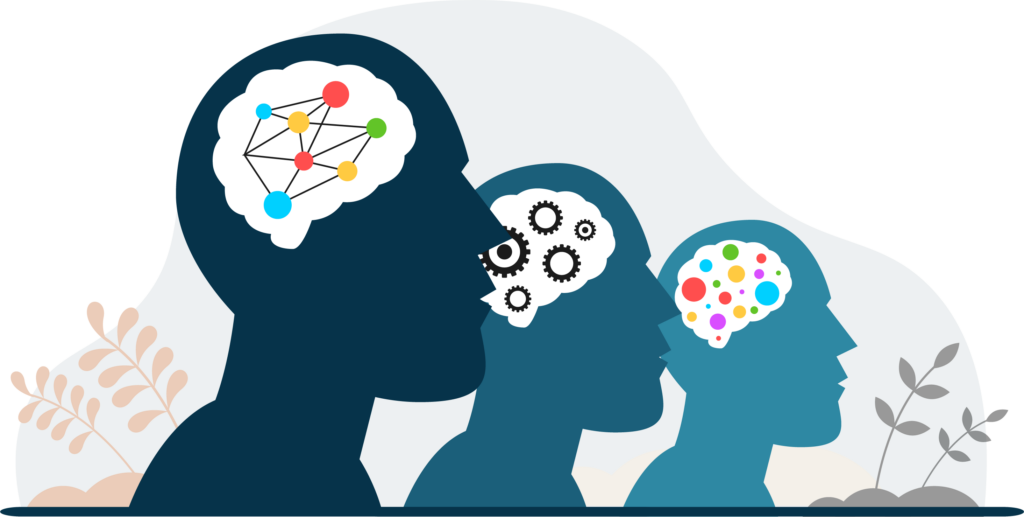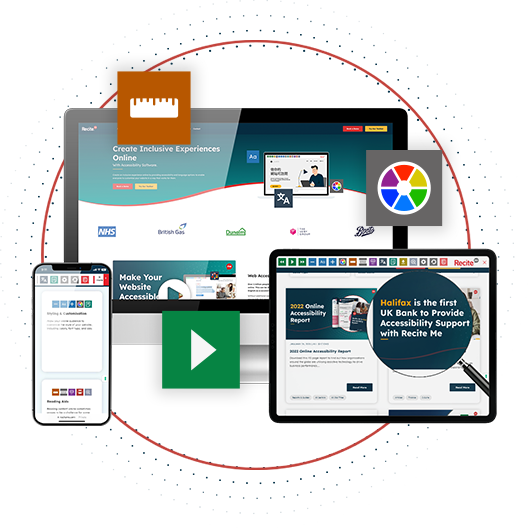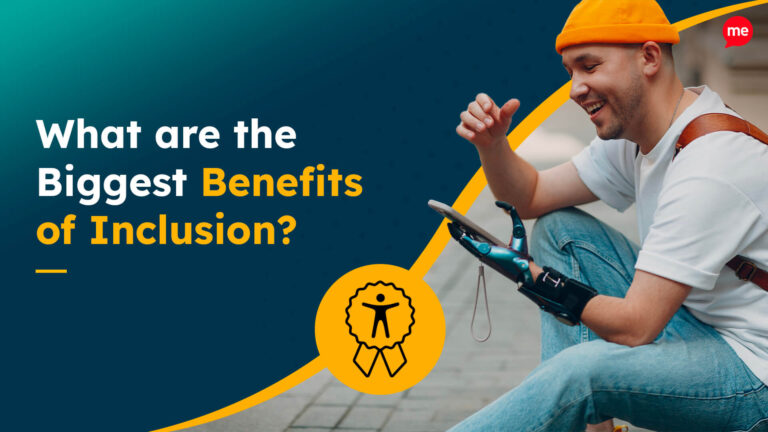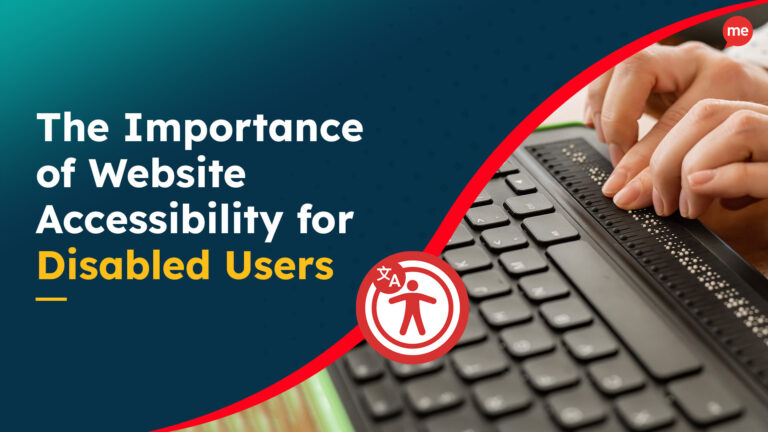This week is Neurodiversity Celebration Week. As a company with a neurodiverse team that develops software products that support the neurodivergent community, this is a celebration we can get behind.
Neurodiversity Celebration Week serves as a reminder that there’s no ‘factory standard’ when it comes to the human brain and how it operates. Globally, one in four people will be affected by mental or neurological disorders at some point in their lives, and it’s estimated that at least 15% of the population is neurodivegent. Yet, many people remain unaware of what neurodiversity is or how it impacts the lives of those around them.

What is Neurodiversity?
Originally coined in 1998 by sociologist Judy Singer, the term neurodiversity refers to the variation in ways we process information, think, act, move, and sense the world around us.
In the same way that every human on earth has different fingerprints, we all have different brains, minds, and cognitive functions. So, we are all neurodiverse, but some people have neurodivergent traits that move further away from the social norm.
Neurodiversity and Disability
Neurodiversity is typically characterised by differences in learning, attention, mood, literacy, numeracy, and social skills. It’s essential to highlight that the word ‘difference’ is crucial in that sentence, because while a neurotypical brain may be classed as ‘the norm’ for ease of description, that doesn’t mean that neurodivergence is a disability. On the contrary, neurodivergent individuals merely see and interact with the physical, social, and online world differently.
“We should celebrate neurodiversity. The world would be poorer and life duller if we were all the same.”
Neil Milliken, Global Head of Accessibility at Atos
It’s also essential to note that the word ‘neurodivergent’ (or any of its variations) isn’t a medical term. It’s simply a better way to describe people than using words other than ‘normal’ and ‘abnormal.’ This is crucial in gaining a deeper understanding of neurodiversity, because there’s no single definition of ‘normal’ when it comes to how the human brain works.
Types of Neurodiversity
The significant diversity between human minds is due to multiple factors, including an individual’s environment, culture, family, and personal history. Several specific ‘conditions’ fall under the umbrella of neurodiversity – and we’re willing to bet they affect more people than you think.
Dyslexia
Deriving from the Greek word ‘dys’ (meaning difficult) and ‘lexis’ (meaning words or language), dyslexia is a reading difficulty characterised by problems identifying speech sounds and learning how they relate to letters and words. Approximately 15% of the population has dyslexia. However, it’s likely that many more people are affected and don’t know it, as reports show that schools could be failing to diagnose up to 80% of cases.

Attention Deficit Disorder (ADD) and Attention Deficit Hyperactivity Disorder (ADHD)
ADD is the term commonly used to describe individuals who have trouble focusing, are easily distracted, forgetful, lose track of time, and struggle with executive functions. The terms ADD and ADHD are often used interchangeably, but they are not the same. ADD is the colloquial term for one particular type of ADHD (Predominantly Inattentive Type). Most people associate ADHD with hyperactivity which, along with the hallmark traits of ADD, would include being talkative, fidgety, or full of nervous energy. However, doctors have used the term ADHD since the mid-90s to refer to both inattentive and hyperactive types. ADHD may affect significantly more people than we think because it’s estimated that around 1.5 million adults in the UK have the condition, but only 120,000 are formally diagnosed.
Developmental Coordination Disorder (DCD)/Dyspraxia
Typical symptoms of DCD/dyspraxia include clumsiness, poor special awareness, forgetfulness, and difficulty mastering motor skills. In a learning or professional environment, common issues extend to being easily overwhelmed by information, experiencing problems with spelling, and struggling to read and process information at the same rate as others. It’s thought dyspraxia affects around 6% of the population, with up to 2% being severely affected.
Dyscalculia
Dyscalculia occurs across all ages and abilities and is characterised by persistent problems in understanding numbers, which typically leads to difficulties with mathematics. Research shows that studies into the causes of dyscalculia are about 30 years behind research into other forms of neurodiversity, like dyslexia. However, it’s estimated that, similar to DCD/dyspraxia, around 6% of people have dyscalculia.
Dysgraphia
Usually characterised by writing difficulties, individuals with dysgraphia have problems recalling how letters are formed, often struggle to write in a straight line, and have trouble determining when to use lower or upper case letters. They may often write letters like ‘b’, ‘d’, and ‘p’ in reverse, and in formative years, struggling to hold and control a pen or pencil is common. Because it often goes undiagnosed or is mistaken for dyslexia, researchers estimate that between 5% and 20% of people have dysgraphia.
Hyperlexia
Hyperlexia is a trait that slams any discussion that neurodivergent individuals are in any way inferior. Characterised by a fascination with letters and numbers, hyperlexics’ have an innate ability to decode or quickly sound out words and are commonly known as ‘super readers’. Hyperlexia is uncommon, with an occurrence rate of around 2 in 10,000 as a stand-alone condition on the autism spectrum. However, around 6% to 14% of people with autism also have hyperlexia.
Developmental Language Disorder (DLD)
Also referred to as Specific Language Impairment, Language Delay, or Developmental Dysphasia, DLD is a communication disorder that cannot be explained by other conditions like hearing loss, autism, or extenuating circumstances like lack of exposure to language. It interferes with all facets of language regarding learning, understanding, and speaking, and is estimated to affect 7% of the population.
Tic Disorders
Individuals with tic disorders make sudden twitches, movements, or sounds repeatedly. Tic disorders are often described in a similar way to hiccoughs, in that they cannot be consciously controlled or prevented. The most well-known tic disorder is Tourettes Syndrome, but other examples include Persistent/Chronic Motor Disorder, Persistent/Chronic Vocal Disorder, and Provisional Tic Disorder. Tic disorders are prevalent in around 1% of the population.
Asperger’s Syndrome
Asperger syndrome is a high-functioning form of autism with many characteristics, including difficulties interacting socially and understanding emotions, nonverbal communication, and sarcasm. Those with Asperger’s can often memorise information and facts quickly, but may also engage in repetitive behaviours and obsessions and can become easily upset by change. Asperger’s syndrome is lifelong, although symptoms tend to improve over time.
Neurodiversity and Online Barriers
Neurodivergent brains assimilate the world around them differently, and that applies equally to the online world as the physical one. From the descriptions above, it’s clear the neurodiverse community would benefit from having information presented in a clear, consistent, and predictable way. So, varied approaches are needed when it comes to learning and working online to ensure equitable experiences for everyone.
Many websites are overwhelming for neurodivergent visitors. Between banners, pictures, links, and buttons, pages can appear very ‘busy’, making it challenging to stay focussed and understand the order and meaning of the words that comprise your content. Aversions to particular colour contrasts can also be problematic.
Examples of Online Barriers
Online access barriers occur when an element of a website’s design or presentation makes it difficult to read or interact with the content. Let’s look at some real-life examples.
Sophie is a dyslexic trying to reserve tickets for a concert at her local stadium. However, the web copy is not presented in a dyslexia-friendly font, creating a ‘river effect’ that makes the text impossible for her to read. Also, the poor colour contrast on the floor plan means she can’t tell which seats are still available.
Noam struggles with Developmental Language Disorder and is trying to complete a large online shopping order. Having moved recently from Isreal, reading in English is hard at the best of times because it’s not his native language and the text flows in the opposite direction across the page. Without a translation option, he abandons his cart and completes his order with an alternative store.
How the Recite Me Assistive Toolbar Can Help

Recite Me assistive technology is the perfect solution to help organisations support their neurodivergent employees and customers. Our assistive toolbar allows website visitors complete control over how they consume your content by making customised changes to the design, content, and layout. Users can make singular or multiple adjustments. Specific features that assist with a broad range of neurodivergent traits include:
- A screen mask to help with focus and concentration.
- Options to have content read aloud in over 65 different languages to negate reading difficulties.
- Control over the speed at which the text is read aloud to allow for varying auditory preferences.
- Customisation options for text font, colour, sizing, and spacing, so that the look of the webpage can be tailor-made into the perfect format for every individual.
- A spell-checker and a fully integrated dictionary and thesaurus to help with comprehension.
Become Neurodivergent-Friendly Today
At Recite Me, our goal of achieving online inclusion for all starts by creating awareness and helping others to understand the opportunities presented by improving web accessibility. By guiding our clients through this process, we can make a positive difference together.
Increasing online engagement for people with neurodivergent profiles should be a priority. Whether you’re a school, university, or business organisation, there are resources on the Neurodiversity Celebration Week website that can help you.








